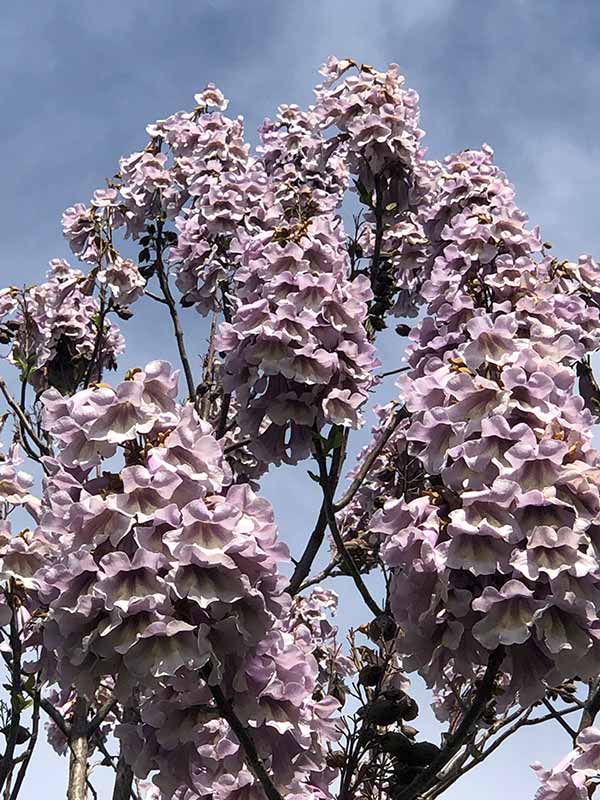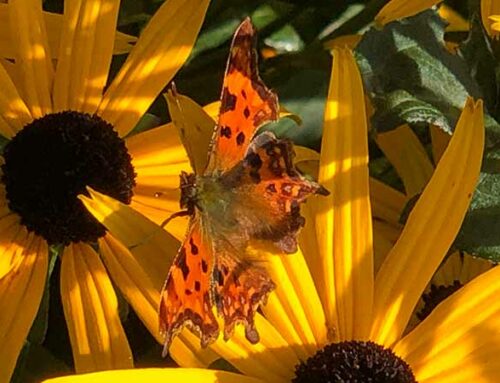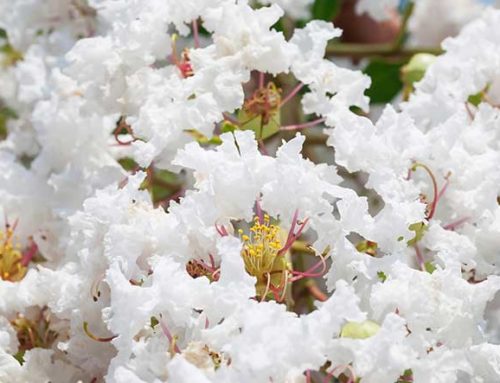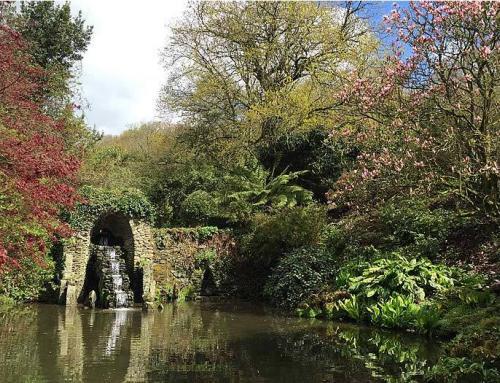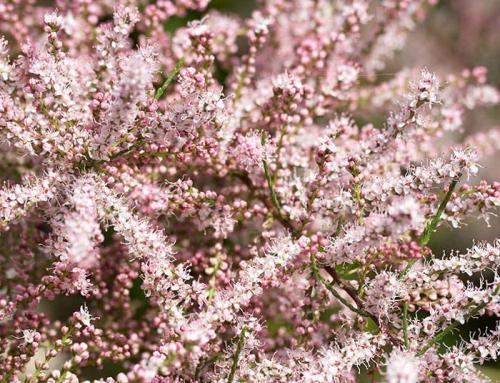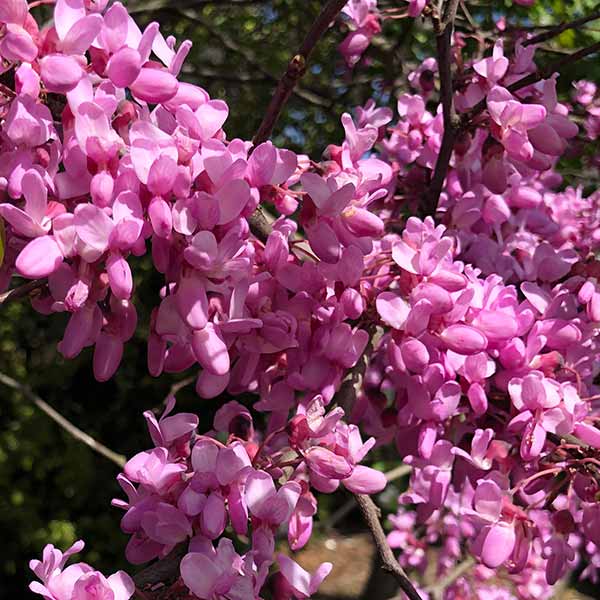
Cercis Redbud – flowering in Spring time
Nothing says spring more than masses of lovely blossoms in your garden and the scent of flowers in the air. After months of dreadful weather and little colour in the landscape, spring is the time when certain flowering trees are at their best. The only “trick” is knowing which UK hardy spring flowering trees to pick to create a striking display of eye-catching blossom.
To help you make your choice, we have selected our most colourful spring flowering trees. These highly ornamental trees are easy to grow and to care for and look absolutely stunning come spring.
10 Best Spring Flowering Trees
Malus Rudolph – Crab Apple Tree
This medium-sized deciduous fruit tree is popular for its lovely pink apple blossoms that open from deep red buds. The blossoms have a subtle, pleasant fragrance. While at its showiest in the spring, Rudolph has a good autumn colour and provides multiple seasons of interest. If you want a spring flowering tree that is highly ornamental and also produces edible fruit, Crabapple Rudolph is an excellent choice.
Cercis Canadensis Texensis Traveller
Before the striking heart-shaped foliage of this Texas Redbud variety unfolds, the weeping branches of this deciduous tree are smothered by rosy-pink flowers borne in clusters. The flowers are followed by dark seed pods that offer interest as the seasons pass, well into the following winter. As this is a dwarf variety, this is an ideal tree for small gardens. Texas Redbud Traveller will not grow over 1.5 metres in height.
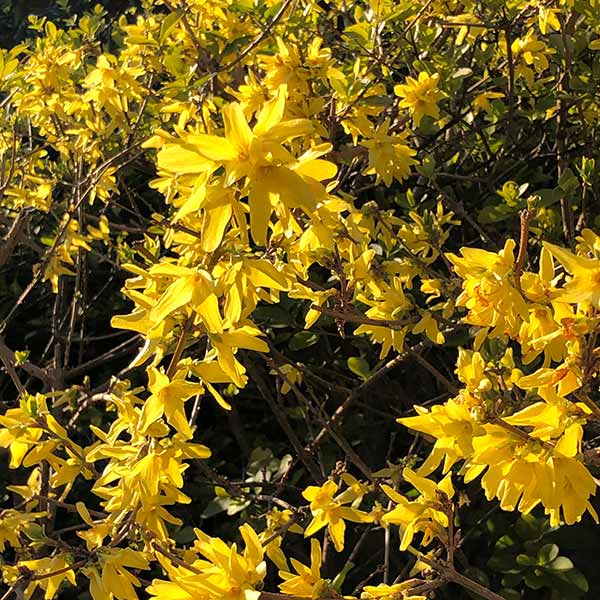
Butter coloured Forsythia flowering on bare stems in Spring
Magnolia Daphne Yellow Flowering
Magnolias are among the most popular flowering trees and early-flowering Daphne is one of the loveliest varieties we sell. As a hybrid, it boasts tulip-shaped, pale yellow blossoms that are longer-lasting than that of its relatives. The sight of these beautiful blossoms on the tips of the bare branches is truly breathtaking! An upright, compact deciduous tree the rare Magnolia Daphne makes a wonderful specimen tree for small gardens.
Abeliophyllum Distichum White Forsythia
Even though Forsythia is technically a multi-stemmed shrub, many gardeners opt to train it as a small tree, with a single stem supporting a ‘crown’ of flower-heavy branches. This puts focus on the plant’s most notable feature: masses of white, scented flowers. If you are looking to add something unique to your garden, White Forsythia in tree form certainly fits the bill.
Chanticleer Pear is a highly decorative deciduous tree that requires very little care but offers plenty of interest in return. Not long after the foliage unfolds in the spring, the branches of this fairly large cultivar are completely engulfed in fragrant, pure white flowers. Combine that with its elegant full standard form, and you get an eye-catching addition to the garden that offers multiple seasons of interest. This ornamental pear might not produce edible fruit, but its value as a specimen tree in the garden is undeniable.
Laburnocytisus Adamii – Adams Laburnum
What can be more show-stopping than a spring flowering tree with blossoms in two different colours? As a graft chimaera of common Laburnum and Cytisus Purpureus, Adams Laburnum features gorgeous long, weeping racemes of flowers in different shades: some will be purple, some bright yellow, and that is all in one tree. Some specimens might even have a third type of flower with an intermediate colour of pinkish-yellow blossoms throughout.
Paulownia Tomentosa Empress Tree
Known as Foxglove Tree, the Princess Tree, and the Empress Tree, this tough and adaptable tree is not just undemanding, but striking as well. Before the foliage unfolds, this deciduous tree is covered in large clusters of pale purple bell-shaped flowers. The blossoms are richly perfumed with a scent similar to vanilla. This is an extremely fast-growing, large tree that is best suited for spacious gardens.
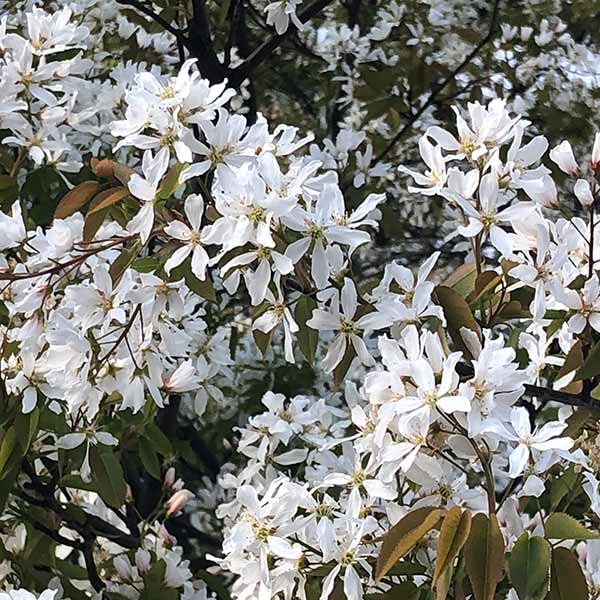
Amelanchier Laevis Snowflakes gets completely enveloped by masses of white blooms in the spring.
The Juneberry Tree or Snowy Mespilus Tree got its name for the pure white, large star-shaped flowers that envelop the tree in the spring. There are so many blossoms on the tree’s branches that it looks covered in snow! A compact deciduous tree that can be grown in a large container, Amelanchier Laevis Snowflakes is ideal for a patio tree or a specimen in small gardens.
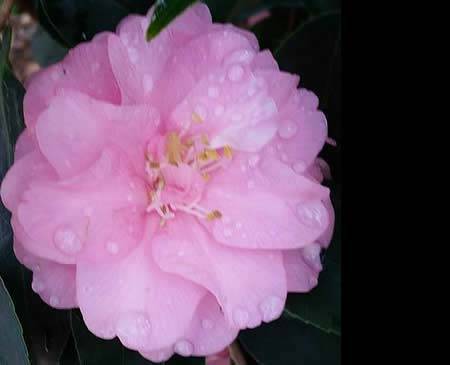
Camellia Japonica Spring Festival has long-lasting double flowers that appear in profusion.
Camellia Japonica Spring Festival
This award-winning Camellia variety is one of the first to bloom in the spring. A US ‘Californian’ evergreen variety, it is highly coveted for its charming pale lilac-pink double flowers that appear on the tree early in April and can stay on the tree for 6 to 8 weeks. While the blossoms of this evergreen Camellia might not be large, they are produced in profusion which makes the whole tree stand out in the landscape. Like all Camellias, Spring Festival also prefers neutral to acidic pH value so it is a perfect choice for ericaceous soil.
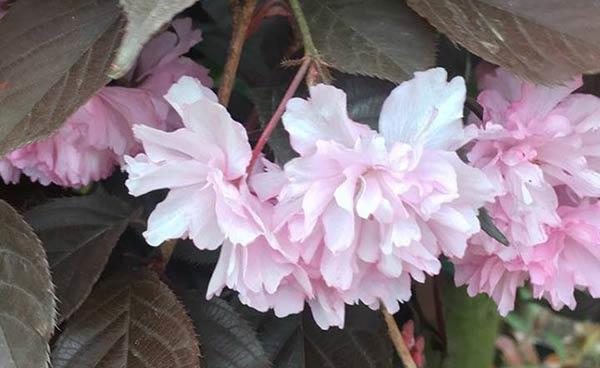
Prunus Royal Burgundy Flowering Cherry Flowering Cherry is highly ornamental because of its contrasting burgundy foliage and pale pink blossoms.
Prunus Serrulata Royal Burgundy
From foliage to flowers, this ornamental tree certainly does not lack spring interest. The leaves, which are a deep burgundy hue, perfectly complement the clusters of pale pink, double flowers that appear. Despite the name, this ornamental deciduous tree does not produce cherry fruits. A slow-growing, mid-sized tree, this flowering cherry tree will fit in any garden with ease.

